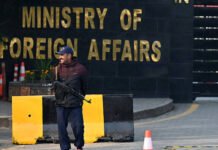Washington DC, 2 July 2022 (TDI): The United States International Trade Commission (USITC) releases “Peru’s Economic and Business Report,” globally as part of the inter-institutional cooperation agreement they have maintained since 2013.
El boletín trimestral “Peru’s Economic and Business Report” se pone a disposición de inversionistas globales desde la red de Embajadas, Consulados y Representaciones Permanentes del Perú en el exterior.
— Cancillería Perú🇵🇪 (@CancilleriaPeru) July 2, 2022
Peru is a nation that inspires confidence in international investors. Despite the political instability with the recent change of administration, it still has one of the lowest country risks in the Latin American area.
Peru has a mixed economic structure that combines various forms of individual freedom with centralized economic planning and governmental control.
The Andean Community (ANCOM), the Asia-Pacific Economic Cooperation (APEC), and the Trans-Pacific Partnership all include Peru as a member (TPP).
Peru is trying to increase human capital on a continent where it is frequently underestimated. The World Bank’s Country Partnership Framework with Peru 2016–2021 (CPF) has four goals under its first pillar, productivity.
- Boost your connectivity
- Lowering the obstacles to formalization
- Encourage small and medium-sized businesses to adopt new skills and technology
- Improve the setting for responsible private investment.
Peru has a strong central bank and sizable foreign reserves. The economy of Peru experienced a significant recovery in 2021, but structural rigidities in the labor market and inflation limited the country’s ability to reduce poverty.
Peru’s macroeconomic strengths are its low levels of debt, inflation, and budget deficit. It is also highly known among investors worldwide—as well as financial institutions maintaining high levels of foreign reserves.
U.S-Peru Trade Promotion Agreement
Peru’s Economic & Business Report evaluates the impact of the TPA on both the overall U.S. economy and various industry sectors.
By removing tariff and non-tariff barriers, the TPA, if put into effect, might increase commerce between the United States and Peru in products and services.
The expected increase in trade between the United States and Peru under the TPA may be beneficial to the American economy.
While this benefit is likely to be modest given Peru’s small share of overall trade and Peru’s existing duty-free access to the American market under the Andean Trade Preference Act (ATPA).
80 percent of the industrial and textile tariff lines from Peru and more than 99 percent of the industrial and textile tariff lines from the United States are already duty-free or will become duty-free as soon as they enter the TPA.
More than 89 percent of agricultural tariff lines from the United States and 56 percent from Peru are already duty-free or will be duty-free as soon as they enter the TPA. A permanent preferential tariff-rate quota for sugar from Peru is provided by the TPA.
Through improved logistics, a more favorable regulatory environment, and increased transparency, the TPA may help stimulate trade and investment.
The goal of trade facilitation measures is to speed up the delivery of services and the movement of commodities. The purpose of the investment provisions is to increase protections for American investors doing business in Peru.
The regulatory environment for bilateral trade and investment is intended to be improved by provisions on intellectual property rights, government procurement, labor, the environment, and dispute settlement.








